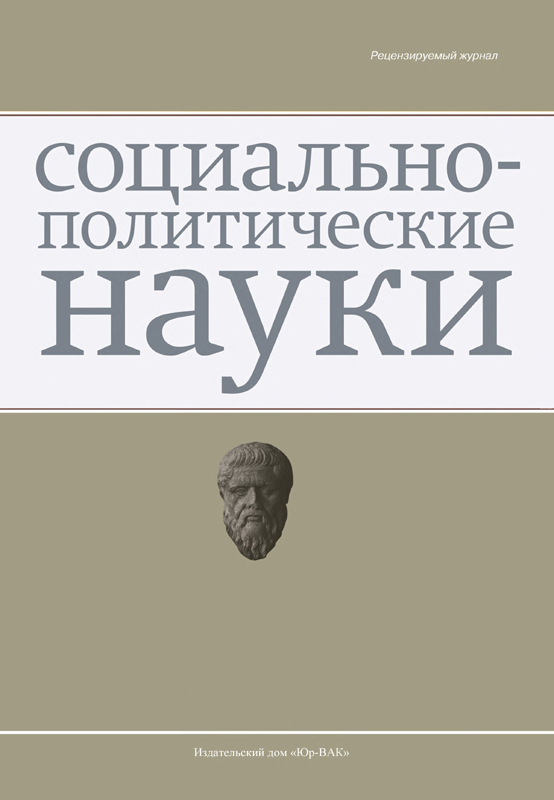Issues of Building China’s Foreign Policy Through the Prism of “Soft Power” and Public Diplomacy
- Authors: Qu C.1
-
Affiliations:
- St. Petersburg State University
- Issue: Vol 13, No 3 (2023)
- Pages: 145-151
- Section: International Relations, Global and Regional Studies
- URL: https://journals.eco-vector.com/2223-0092/article/view/562959
- DOI: https://doi.org/10.33693/2223-0092-2023-13-3-145-151
- EDN: https://elibrary.ru/IGYHAF
- ID: 562959
Cite item
Abstract
The author notes that the trend of recent years has been to increase the importance of the cultural factor in modern international relations and changes in the system of intercultural interaction in modern conditions of global development. Culture, education, language, cultural and historical traditions – all this is becoming an effective tool for spreading the influence of the state, both at the regional and global levels. Cultural dialogue in a broad sense creates favorable prerequisites for the implementation of various integration projects, which requires new conceptual approaches and effective strategies, the development of which takes place in the context of the policy of “soft power”. Through understanding the theoretical basis of the concept of “soft power” and public diplomacy, the presented article focuses on China’s foreign policy, including the activities of Confucius Institutes, revealing their current development status, their own strengths and challenges in promoting “soft power”, as well as the opportunities and challenges it faces in implementing “One Belt, One Road” Initiative and the dissemination of the Chinese language abroad, in China’s partner countries on the Initiative.
Full Text
About the authors
Chang Qu
St. Petersburg State University
Author for correspondence.
Email: st073275@student.spbu.ru
postgraduate student
Russian Federation, Saint PetersburgReferences
- Vision and action aimed at promoting the joint construction of the Silk Road Economic Belt and the XXI Century Maritime Silk Road. Official website of the Embassy of the People’s Republic of China in the Russian Federation. 04.23.2015. URL: http://ru.china-embassy.gov.cn/rus/jmhz/jmhz1/201504/t20150423_3149325.htm (data of accesses: 06.02.2023).
- Lai L. “Soft power” of China in the implementation of the “One Belt, One Road” initiative: Media discourse. Bulletin of the VSU. Series: Philology. Journalism. 2018. No. 1. Pp. 106–109. (In Rus.)
- Liu Ts. “One Way, One Belt” is the way of China’s participation in global governance. URL: http://world.people.com.cn/n1/2016/1126/c1002-28897749.html (data of accesses: 06.02.2023).
- Liu Ts., Wang M. “One Belt, One Way”: The way of “traveling to the West” of China’s soft power. Jianghan Luntan. 2016. No. 6. Pp. 48–52. (In Chinese)
- Mikhnevich S.V. Panda in the service of the Dragon: The main directions and mechanisms of China’s “soft power” policy. Bulletin of International Organizations. 2014. Vol. 9. No. 2. Pp. 95–129. (In Rus.)
- Nye J.-jr. The future of power. V.N. Verchenko (transl. from English). Moscow: AST, 2013. 444 p.
- Pestsov S.K., Bobylo A.M. “Soft power” in world politics: The problem of operationalization of a theoretical concept. Bulletin of Tomsk State University. History, 2015. No. 2 (34). Pp. 108–114. (In Rus.)
- Glaser B.S., Murphy M.E. Soft power with Chinese characteristics. The ongoing debate. In: Chinese soft power and its implications for the United States. 2009. Рр. 10–26.
- Liu M., Su C., Wang F., Huang L. Chinese cross-border M&As in the “One Belt and One Road” countries: The impact of Confucius Institutes. China Econ. Rev. 2020. No. 61. P. 101432.
- Lien D., Oh C.H., Selmier W.T. Confucius institute effects on China’s trade and FDI: Isn’t it delightful when folks afar study Hanyu? Int. Rev. Econ. Financ. 2012. No. 21. Рр. 147–155.
- Star R.F. (ed.) Public diplomacy. USA versus USSR. Stanford University. Hoover Institution Press, 1986. 305 р.
- What is public diplomacy? URL: http://fletcher.tufts.edu/ murrow/public-diplomacy.html (data of accesses: 02.06.2023).
Supplementary files









